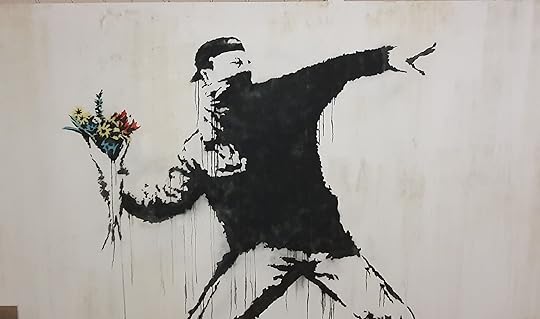Ripley Entertainment Inc.'s Blog, page 32
April 17, 2023
CARTOON 04-17-2023
April 16, 2023
CARTOON 04-16-2023
April 15, 2023
CARTOON 04-15-2023
April 14, 2023
Up Close & Peculiar With Artifacts Of Abraham Lincoln
Featured in Ripley's Believe It or Not!

Today: The Death of Abraham Lincoln
We are in the Ripley’s warehouse today with a few artifacts from good ‘ole Honest Abe. Starting with John Wilkes Booth’s derringer gun that he left behind in the theater after killing President Lincoln. It’s said that it fell out of his pocket after he was escaping the theater. BUT -fun fact-, most historians do not believe this is the actual gun that Lincoln was killed with.
When Booth was found hiding in a farmhouse in Virginia after the assassination, a second matching gun was found in his pocket. THIS was the gun that was believed to be the murder weapon. This ended up being confirmed 106 years after the assassination in 1971 after the inside of both gun’s barrels were tested and it was found that the gun found in Booth’s pocket matched the bullet fragments found in Lincoln’s head.
Now you may be wondering, where did they take Lincoln after he was shot? Well, he ended up being taken to a nearby boarding house across the street. It was there that he was looked after by doctors and loved ones until he eventually passed away. This brings us to the other two objects we have here: A lock of Lincoln’s hair taken post-mortem, as well as a clipping from the bedsheet that he died on.
It may seem pretty morbid to think that someone took a clip of his hair after he died, but Believe It or Not!, this was actually pretty common in Victorian times!
And for the bedsheet clipping? Well, it was said that the person who was actually staying in the room that Lincoln died in came home hungover the day after Lincoln was shot and took a nap on the blood soaked sheets. He then wrote a letter to his sister telling her about the horrible things that had taken place, and claimed that he had a clipping of Lincoln’s hair, along with a piece of linen with Lincoln’s blood splattered on it. Kinda weird flex but okay! Now, this is probably not that same bit of linen but it did come from that same sheet that he died on, with a bit of his blood stained onto the fabric.
Do you have more questions about the conspiracies surrounding the Lincoln assassination? Leave them down in the comments and we’ll do some investigating! Thanks for watching, see you soon!
EXPLORE THE ODD IN PERSON! Discover hundreds of strange and unusual artifacts and get hands-on with unbelievable interactives when you visit a Ripley’s Odditorium!Source: Up Close & Peculiar With Artifacts Of Abraham Lincoln
Researchers Spot and Film Ocean’s Deepest-Dwelling Fish
Featured in Ripley's Believe It or Not!

Scientists working on the research vessel DSSV Pressure Drop (now named Dagon) near Japan recently filmed the deepest fish ever recorded beneath the ocean’s surface. The extremely small white snailfish was swimming at a record-breaking depth of 27,349 feet (8,336 meters, or 5.1 miles). Believed to be a juvenile member of the genus Pseudoliparis, the researchers jumped at the opportunity to capture footage.
Sea-ing is BelievingIn addition, scientists from the Minderoo-University of Western Australia Deep Sea Research Centre and the Tokyo University of Marine Science and Technology caught two snailfish from the species Pseudoliparis belyaevi while working in the Japan Trench north of the Izu-Ogasawara Trench. They used traps set at 26,319 feet and broke the record for the deepest fish ever captured.
Expedition lead scientist Alan Jamieson and founder of the Deep Sea Research Centre said in a statement, “The Japanese trenches were incredible places to explore. They are so rich in life, even all the way at the bottom.” He added that it was the first time anyone had seen or caught a fish in the Izu-Ogasawara Trench and believes there are more fish residing there.
This is the deepest fish ever caught on camera by scientists pic.twitter.com/x7m01c10fX
— CNN (@CNN) April 3, 2023
Snailfish belong to the Liparidae family, of which there are over 400 known species. They live in shallow coastal waters as well as in the ocean’s deepest areas. They can tolerate extreme pressure up to more than 800 atmospheres, a condition that would squash most living creatures. In order to live so deeply underwater, snailfish do not have swim bladders (air-filled sacs that allow most fish species to have buoyancy). And instead of scales, snailfish have a gelatinous layer that prevents them from being crushed from the pressure, according to Jamieson. They also use a fluid called osmolyte that protects them on a cellular level.
Younger snailfish are generally better adapted to live in deeper water compared to their adult counterparts. This is the opposite of many other deep-sea fish species. The young snailfish’s ability to swim at deeper depths allows it to avoid potential predators that cannot swim as far down.
A Fin-tastic DiscoveryPreviously, the deepest fish ever filmed was a Mariana snailfish (Pseudoliparis swirei) swimming at a depth of 26,831 feet in the Mariana Trench, which is the Earth’s deepest-known ocean trench.
Mariana snailfish live over 26,000 feet below sea level. pic.twitter.com/IpbMYURkWT
— Seeker by The Verge (@Seeker) August 25, 2018
The new footage, which was taken during a two-month expedition last August through September, implies that snailfish in the Japanese trenches may be more prolific than similar species that reside in other ocean trenches. Researchers have not yet determined the reason for this.
“The real take-home message for me, is not necessarily that they are living at 8,336m,” Jamieson said, “but rather we have enough information on this environment to have predicted that these trenches would be where the deepest fish would be, in fact until this expedition, no one had ever seen nor collected a single fish from this entire trench,” Jamieson said.
The scientists want to return to the trenches near Japan as well as the Ryukyu Trench to further study the snailfish as well as locate other deep-sea fish.
By Noelle Talmon, contributor for Ripleys.com
EXPLORE THE ODD IN PERSON! Discover hundreds of strange and unusual artifacts and get hands-on with unbelievable interactives when you visit a Ripley’s Odditorium!Source: Researchers Spot and Film Ocean’s Deepest-Dwelling Fish
CARTOON 04-14-2023
April 13, 2023
Making Banksy: Millionaire Graffiti Artist’s Identity Still a Mystery
Featured in Ripley's Believe It or Not!

In 2010, the artist and provocateur known as Banksy became one of Time magazine’s top 100 most influential people. In the process, he joined the ranks of Lady Gaga, Steve Jobs, and Barack Obama. Yet, unlike these individuals, Banksy’s real identity has never been revealed. How did he get around the portrait Time Magazine asked him for? By appearing with a paper bag over his head.
Despite the refusal to self-identify, Banksy’s art has skyrocketed in popularity over the years. Never one to shy away from visual shock and awe, the graffiti-artist-turned-master continues to meld activism with art in brilliant and controversial ways. Keep reading for the incredible true (as far as we know) story of one of the West’s most essential and influential visual artists.
From City Walls to Canvasses and MoreBanksy has elicited just about every response you can imagine since his graffiti art beginnings in the 1990s. “Debuting” in Bristol, England, Banksy spray-painted city walls, an illegal outcry against injustices of every sort. But the decades have brought a surprising evolution from an urban street artist to an established visionary whose canvasses sell for millions at auction houses worldwide.
Over the years, the anonymous spray painter has traveled extensively, leaving his mark from Detroit to San Francisco, Barcelona to Paris and Jerusalem. Besides moving from walls to canvasses, Banksy has also dabbled in other media, including conceptual art, and his 2010 film Exit Through the Gift Shop received an Academy Award nomination.
Humble Beginnings to International FameBanksy’s career began in the Barton Hill district of Bristol, where he signed his work as Robin Banx. He tried several handles before settling on Banksy, which proved easier to spray-paint on a wall. Apart from deciding on a public identity, the artist also dove headlong into using stencils, which would come to define his unique style.
The switch from freehand to stencils began with a practical impetus. After Banksy and his friends came within inches of capture by cops, he knew he needed to tighten up his artistic process. Stencils proved a natural answer. Moreover, they came ripe with meaning. Banksy once explained, “As soon as I cut my first stencil, I could feel the power there. I also like the political edge. All graffiti is low-level dissent, but stencils have an extra history. They’ve been used to start revolutions and to stop wars.”
Garnering Public AttentionWhat sets Banksy apart from other activist artists around the world? His whimsical and pacifist approach to dissent. He juxtaposes images of street-fighting protesters with flowers. But perhaps the visual concepts that have brought him the greatest fame involve children.

Girl with Balloon, in South Bank. Credit: Dominic Robinson Via Wikimedia Commons (CC BY-SA 2.0).
In 2005, Banksy traveled to Israel, where he stenciled children’s images on the concrete walls of the West Bank. The most notable featured a young girl holding balloons. But he also painted a boy with a ladder and two children with a spade and bucket. The theme of escapism permeated each work, heightening the political tension of the location — a wall constructed to prevent suicide bombings.
Raking in the MillionsThe creative momentum didn’t stop there. Exploring the revolutionary juxtaposition of artistic masterpieces with elements of urbanity, Banksy created nods to Claude Monet and Edward Hopper, complete with window-smashing street criminals, shopping carts, and trash.
Banksy’s ‘Show Me the Monet’ painting—a subversive take on Claude Monet’s 1899 ‘Bridge Over a Pond of Water’—just sold for nearly $10M at auction pic.twitter.com/X6sEhcQCZ8
— NowThis (@nowthisnews) October 24, 2020
Some critics hailed these works, exhibited collectively as “Crude Oils,” as genius. Others disparaged them as vandalization of some of Western Civilization’s most sacred masterpieces. But almost everyone in attendance agreed that the 164 live rats running around the room went over the top.
No matter what critics had to say, the broader public latched onto Banksy’s work in a big way. A later exhibition in Los Angeles entitled “Barely Legal” attracted 300,000 visitors, including Brad Pitt. And his aforementioned 2005 painting Show Me the Monet, interpreted as a desecration of its Impressionist creator, raked in an incredible $9.92 million at auction in 2020!
Bringing Attention to Familiar but Overlooked ProblemsDespite his rise to fame, Banksy has never changed his tune about staying anonymous. And the same goes for how he uses art to draw attention to societal problems that are an ignored part of daily existence. Not surprisingly, his performance art continues to spark controversy.
In Los Angeles, he exhibited a live elephant covered in scarlet paint and fleur-de-lis–inspired designs. Animal rights activists protested, demanding the paint be immediately removed from the pachyderm. Banksy used the confrontation to draw attention to one of the city’s most pressing problems — poverty — declaring it the “elephant in the room.”
Embed from Getty Imageswindow.gie=window.gie||function(c){(gie.q=gie.q||[]).push(c)};gie(function(){gie.widgets.load({id:'XKwA1DgtQElEPHTtZY3jcQ',sig:'EuH2ojCOSH49vTCWr9TJkV8gBRl2ZwPWwj5HhNQB48U=',w:'594px',h:'419px',items:'86149629',caption: false ,tld:'com',is360: false })});
He wouldn’t stop there. In 2008, he participated in the most successful charity art auction in history, helping to raise $42.5 million to support AIDS programs on the African continent. Work that sold at the auction included A Vandalized Phone Booth for $605,000 and Ruined Landscape for $385,000.
The Artist Known as BanksyOver time, anonymity has become a springboard, too. As Banksy’s whimsical and revolutionary work appeared in more places, the art world took notice, comparing his pieces to Keith Haring and Jean-Michel Basquiat. But unlike Haring and Basquiat, Banksy has managed to maintain the mystery surrounding his identity.
At least some of his biggest fans feel just as passionate about the artist’s anonymity. Over the years, they’ve slammed numerous attempts to unmask him. As a result, we may never know the true identity of this pop culture icon.
Of course, this raises many questions. Like, how do art collectors know when they’ve bid on and won an authentic Banksy masterpiece? Practical considerations require entrepreneurial flair, but that doesn’t mean Banksy can’t inject a little whimsy into things. As a result, he created the aptly titled Pest Control, an organization that handles the business side of his artwork.
The Ever-Irreverent ArtistThe irony of Banksy’s acceptance by the mainstream hasn’t escaped him. He accepts it for what it is, noting, “I love the way capitalism finds a place — even for its enemies. It’s definitely boom time in the discontent industry.” But, of course, that doesn’t mean he has taken the commodification of his creative vision in stride.
In one of the most shocking moments from his career, the street artist’s Balloon Girl sold at auction in 2018 for $1.37 million. Containing one of his most recognized themes, the auction winner barely had a moment to congratulate herself before the frame of the painting sounded an alarm, and the canvas passed through a shredder built into the frame.
The shredding of Balloon Girl reasserted Banksy’s ambivalent relationship with the art world and those who collect his paintings. It also reminded the world of his cynical 2007 posting of an art auction online with the wording: “I can’t believe you morons actually buy this s—.” Despite the celebrity he now enjoys, Banksy remains committed to anonymity and activism through art, holding nothing sacred as he unflinchingly underscores the world’s most significant social issues and injustices.
By Engrid Barnett, contributor for Ripleys.com
EXPLORE THE ODD IN PERSON! Discover hundreds of strange and unusual artifacts and get hands-on with unbelievable interactives when you visit a Ripley’s Odditorium!Source: Making Banksy: Millionaire Graffiti Artist’s Identity Still a Mystery
CARTOON 04-13-2023
April 12, 2023
40 Years Ago, Time Magazine Put A Personal Computer On Its Front Cover
Featured in Ripley's Believe It or Not!

Every year since 1927, Time magazine has honored the “Person of the Year”. That is, for one major exception, the one year when Time didn’t.
The year was 1983 and the world was quickly changing. The rumblings of technological advancements were on the horizon and many were just beginning to become acquainted with something that would change society forever: the personal computer.
You can probably guess where i’m going with this.
Jumping Back In TimeIn 1927, Time magazine released the first special issue of what would become one of their landmark publications. Until 1999, the issue would be called “Man/Woman of the Year” (ultimately opting for “Person of the Year”) and Charles Lindbergh was the first face to grace the cover.

Charles Lindbergh (Via Wikimedia Commons).
The name Lindbergh is better known today because of the infamous 1932 kidnapping and murder of Lindbergh’s first son, twenty-month-old Charles Augustus Lindbergh Jr., from his home in New Jersey. But in 1927, Lindbergh was a legend of his own, being the first person to complete a 33 1/2-hour solo nonstop flight across the Atlantic Ocean.
Over the next few decades, Time magazine’s cover would feature a wide range of famous individuals – many presidents and political leaders from the US and around the world, astronauts, popes, queens, and adventurers. And because the magazine defines “Person of the Year” as somebody who “for better or for worse … has done the most to influence the events of the year,” a number of controversial faces have graced the cover as well.
Make Way For… A Machine?When Time magazine published its 1983 “Man of the Year” issue at the end of 1982, it didn’t feature any well-known face. Instead, it included a photo of a paper sculpture of a man sitting in front of a table, looking at a computer screen. The cover read “Machine of the Year: The Computer Moves In.”

The top portion of Time magazine’s 1982 “Machine of the Year” cover, December 26th, 1982 (via Wikimedia Commons).
Computers were not a new thing in 1983, but up until a couple of years before, they weren’t something you just had at home either, mostly because of their high price tag. But by 1982, Commodore Business Machines (CBM) had released the Commodore 64. With a price tag of just $400, it was incredibly affordable – suddenly, people were able to play games, handle word processing and accounting processes, and even listen to music in their own personal computers, right at home.
By 1984, Apple Macintosh would release its first personal computer, the Lisa. But with a price tag of $2500 for a basic model, it was out of reach for many, so the Commodore 64 (and its successor, the Commodore Amiga) continued to sell in high numbers for years to come.
When Time magazine chose to put a personal computer on the cover, it could not possibly anticipate the revolution that was on the way. Still, it was obvious something big was brewing. As Time itself would put it, “Time’s “Man of the Year” for 1982, the greatest influence for good or evil, is not a man at all. It is a machine: the computer.”
The Computer RevolutionThe original 1983 Time magazine article looked closely at the fears surrounding computers, questioning how they would change the way people think or if they would make people smarter. Even looking ahead at the impact they could have on both kids and adults. There was also a concern about whether computers could make learning obsolete – after all, if a dictionary stored in a computer could fix your spelling, why bother teaching people to spell at all? A fear that resonates with today’s similar concerns regarding AI replacing writers, designers, and artists.
By 1988, just five years after Time magazine’s revolutionary cover, 15% of American households had a personal computer. Excel, Microsoft Office, HP DeskJet inkjet printers, and Sega’s first gaming console system were suddenly available and the world would never be the same.
By Diana Bocco contributor for Ripleys.com
EXPLORE THE ODD IN PERSON! Discover hundreds of strange and unusual artifacts and get hands-on with unbelievable interactives when you visit a Ripley’s Odditorium!Source: 40 Years Ago, Time Magazine Put A Personal Computer On Its Front Cover
CARTOON 04-12-2023
Ripley Entertainment Inc.'s Blog
- Ripley Entertainment Inc.'s profile
- 52 followers









